


A Brief History of Barefoot Running
Minimalist shoes and barefoot running has been a strategy of champions for decades
By Roger Robinson
First published in "Running Times." Roger's books on running are available signed by the author from
www.roger-robinson.com
As featured in the April 2011 issue of Running Times Magazine and at www.RunningTimes.com
Rome, Sept. 10, 1960: Starting line of the Olympic Marathon -- The three New Zealanders, Jeff Julian, Barry Magee and Ray Puckett, nervously await the starting gun. Standing next to them they notice an unknown African runner with a skeletal figure and no shoes. "Oh, well, that's one we can beat, anyway," Puckett says.
The African was Abebe Bikila of Ethiopia. His bare feet skimmed over the hot streets of Rome that night to give him the Olympic gold medal in a world-record 2:15:16.2. Magee was third. "It was amazing that Bikila was standing right next to us on the line," Magee told me late last year. Puckett's ill-fated remark has become urban legend. David Maraniss's book Rome 1960 wrongly attributes it to a member of the American team.
Bikila's gold medal in Rome is the most famous barefoot victory in modern running history, but far from the only one. Bare feet were not invented in 2009, and have been the footwear of choice for many top and other runners long before the current fashion.
Same for minimalist shoes. The idea that less weight on your feet helps you go faster is not rocket science, nor a deep secret preserved for centuries by lost tribes. Shoe companies' 2011 "minimalist" models follow a long line. In 1951 Shigeki Tanaka (Japan) won the Boston Marathon in tiny canvas sock-shoes with a separated big toe. In 1953, Roger Bannister's search for perfection and the 4-minute mile led him to a Wimbledon shoemaker called Sandy Law, who custom-made track spikes with uppers of soft, super-light kangaroo skin. I can vouch for it. In 1957, as a young Bannister fan at school in Wimbledon, I had Law make a pair for me. Problem: the long spikes and frail heel were a mistake for cross country.
In the 1960s, top British road runners wore imported Japanese Tiger Cubs, a featherweight improvement on our usual clunky tennis shoes. In 1967 a rival English shoe was marketed with the slogan "Run Barefoot on the Road." Some of us found a line of mass-produced and very light black sneakers that we mysteriously dubbed AA60s, since that was stamped on the rubber soles. I ran sub-50 minutes for 10 miles in those. Problem: blisters if the road was hot.
In 1973, in Auckland, New Zealand, the Laser Shoe Company, established by Arthur Lydiard's brother, Wally, developed the distinctive Toe-Peepers, with a cut-open front that cooled the foot and eliminated chafed toes--"a world first," says Magee. One problem: stones could sneak in. In 1985, Nike introduced the Sock Racer--bright yellow, no laces, no tongue, very light, felt great. Problem: it was so hard to get the darn things on that you were exhausted before a race.
Runners who think about their craft have always been willing to go minimal, as well as learn from people who live close to nature. So we have long been familiar with the Tarahumara Indians. Far from being a hidden unknown tribe, their prowess and their limitations as runners are well-known in the running world. Several of them have been trained and selected to represent Mexico, and their running rituals have been reliably recorded in at least one British mass-circulation newspaper, and American books such as Peter Nabokov's deeply informative Indian Running (1981), required reading for anyone claiming to understand Native American running culture.
Britain's Tim Johnston got to know a group of Tarahumara when he was living in Mexico in 1967 to prepare for the 1968 Olympic marathon. A Cambridge graduate and international lawyer, Johnston had placed second in bare feet in the 1967 International Cross-Country Championship.
"They were with the Mexican pre-Olympic squad, happy to have nothing to do but run all day, but they were very slow, just shuffling along in traditional huaraches. Kempka, their Polish coach, wanted to find some young enough to train into competitive marathoners. Farther south than Chihuahua, in the Chiapas, in the early morning you could encounter whole family groups of Mayan Indians, kids to grans, trotting heavily laden along the mountain trails on their way to market," Johnston recalled in 2010.
Runner-coach-scientist-author Bruce Tulloh, who won the European 5,000m championship barefoot on cinders in 1962, visited and studied the Tarahumara in 1971, and wrote fully about them in the magazine of Britain's Observer Sunday newspaper.
"Those I saw all ran in their huaraches. Their stamina was impressive. I was still in 14:00 shape for 5,000m, and one of their stars, Ramon, in his mid-40s, ran with me for 90 minutes and never took his hat off. I also ran with a younger runner, Madril, whose pulse after a brisk 50 minutes was 10 beats lower than mine (but of course I was not altitude-adjusted)," Tulloh told me.
Tulloh had been part of scientific research into barefoot running in 1961, conducted by Dr. Griffith Pugh, famous as the medical leader of the mountaineering team that conquered Everest in 1953. Later Pugh did seminal research into altitude training.
"Dr. Pugh had me run repetition miles, to compare the effect of bare feet, shoes, and shoes with added weight. He collected breath samples.
It showed a straight-line relationship between weight of shoes and oxygen cost. At sub-5:00 mile pace, the gain in efficiency with bare feet is 1 percent, which means a 100m advantage in a 10,000m. In actual racing, I found another advantage is that you can accelerate more quickly," Tulloh said.
Barefoot racing was so popular among elite runners in England that one photo of a major 6-mile race in 1967 shows the three leaders all shoeless on the black cinders--Tulloh, who won in 27:42.00, Johnston third, and Jim Hogan, who dropped out that day but was later Europe's marathon champion. Ron Hill, Ph.D., another scientist known for his minimalist racing apparel, ran barefoot when he took second in the International Cross-Country Championship in 1964, when he won the British 10-mile track championship in 1965, and when he placed seventh in the Mexico Olympic 10,000m in 1968. Hill even experimented racing barefoot on the road.
"In 1965 I won the Salford 7.5-miler in a course record, then won the Beverley Marathon, in 2:26:33, both barefoot," Hill surprisingly revealed. "I was going to run the marathon at the 1972 Munich Olympics barefoot, but the Germans laid new stone chippings on parts of the course."
You have to pick your surface and your day for racing barefoot. Hill and Johnston both erred by racing without spikes on a wet course at the 1965 International Cross-Country in Ostend.
"Drizzle turned to rain and I could get no grip. Feet work best on dry, sandy courses, where you just drift over the ground without having to think about 'driving.' And in a steeplechase, you don't have waterlogged shoes," Johnston said.
Hill reported that he had "no problems on the synthetic track at the Mexico Olympics," but one 3-mile race on cinders caused complications.
"Sharp pain in right heel after two laps, but I won in 13:34.8. Still in pain during 60 miles that week to and from work, then winning the north of England 6 miles, and 13 miles on Sunday. After that, using a darning needle, I dug a substantial pyramid of glass from the heel," Hill recalled.
The other world-famous barefoot champion was the sylph-like Zola Budd Pieterse of South Africa and Great Britain, who won the world cross country championships twice (1985, 1986), and (it is worth remembering) was the only runner without spiked shoes in the Mary Decker Slaney tangle in the 1984 Los Angeles Olympic 3,000m. Speedy, lightweight taxis in South Africa are now called Zola Budds.
Fewer top Americans have favored barefoot running, probably because cross country was never central for them at an international level.
"Or too many broken beer bottles along the roadside," comments a skeptical Rich Benyo, editor of Marathon & Beyond.
Running author Hal Higdon first took to it out of necessity.
"In the mid-1960s I came down with the mother of all fungal problems, so bad my shoes were all infected. So I started running barefoot on the grass inside the University of Chicago track. It was enjoyable, and I found I could race successfully barefoot on the new 3M rubberized tracks, whereas on the old cinder tracks you needed tougher feet," Higdon reminisced. "My most notable barefoot race was a 5,000m at a major masters meet in London, England, in 1972, a 14:59.6 American record that lasted nearly a quarter century."
"Stanford University's cross country teams run a few miles barefoot every week, to improve flexibility," Higdon added. "A doctor with the team did some revealing research on the subject."
One legendary barefoot American was Charlie Robbins of Middletown, Conn.
"Doc Robbins was a true minimalist in the Thoreau way," says Amby Burfoot, editor at large with Runner's World. "A psychiatrist, he got stranger as he got older. Lived in a hovel, and usually raced barefoot, running the Manchester 5 miles a straight 50 times. When I interviewed him, he said something like 'barefoot over 50 degrees, socks if 40 to 50, boat shoes if under 40.' Those were the webby rafting shoes, a bit like the Nike Sock Racer."
The current craze for minimalist footwear has overlooked the other side of the equation, the benefits of training in heavy shoes. That was a well-established principle 400 years ago, when a play by John Webster speaks of "… cunning footmen that have worn shoes made of lead some 10 days 'fore a race to give them nimble and more active feet."
Multiple world record-holder Alf Shrubb of England sometimes trained in weighted shoes in the early 1900s. The iconic Emil Zatopek (Czechoslovakia) famously did some of his forest training in army boots. The UK's David Bedford used the same method on the way to breaking the world record for 10,000m in 1973. Friends still sometimes call him "Bootsy." Even the frail-looking Tulloh and Hill added power by carrying extra pounds on their feet in training. All were seeking the same gain as the racing footmen four centuries ago, building strength that makes your feet feel nimble when you put on lighter shoes for the race.
"I used to run in boots in winter, copying Zatopek, and found it good for leg strength," Tulloh said.
"I believed in the contrast between heavier shoes for training and ultralight shoes or barefoot for racing. I kept urging Puma to give me heavier trainers. In the end they told me the only way to get the shoes heavier would be to put iron in them," Hill told me.
Thinking achievers like Hill, Higdon, Johnston and Tulloh are worth listening to. Serious runners through history have experimented with footwear, and reliable research is available dating back to the 1960s. Informed writing like Nabokov's and Tulloh's deserves to be recognized. The Tarahumara slow-shuffle over rocky terrain is not necessarily a magic elixir for running faster marathons. Bare feet, minimalist shoes, and heavyweight trainers can all bring problems. The key, if you are considering change, is that in nature all adaptation is slow. Read real experts, and don't rush. Bandwagons are only good for bands.
And I like credit to be given where it is due, both in publications and in running. The first to race an Olympic marathon barefoot was not even Abebe Bikila in 1960, but Len Tau, a Tswana tribesman representing South Africa at St. Louis in 1904. He finished ninth.
Senior writer Roger Robinson's best barefoot time was 28:59 for 6 miles on a grass track in 1969.
First published in "Running Times." Roger's books on running are available signed by the author from www.roger-robinson.com
"Heroes and Sparrows: a Celebration of Running", is about to be re-published, a "25th anniversary edition." That includes a sentence that has often been quoted, in a section on "Why I run":
"I run for the feel of the textures of the earth under my feet."
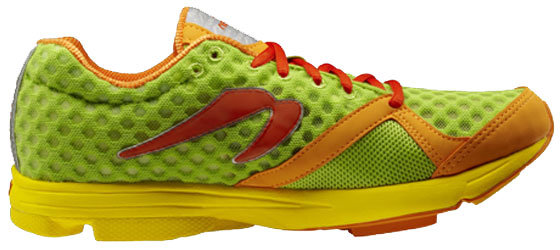 If you liked the 2011 Newton Distance you are going to love the 2012 Newton Distance. The 2012 Newton Distance has all the things you liked about the 2011 model, but is now more lightweight, with a much sleeker profile.
The Newton Distance is a natural running shoe that lives up to its namesake. This is a distance runners lightweight trainer. Light enough for the short runs, or even racing, but it is the sustained comfort over long distances that really makes this a distance runners shoe.
If you liked the 2011 Newton Distance you are going to love the 2012 Newton Distance. The 2012 Newton Distance has all the things you liked about the 2011 model, but is now more lightweight, with a much sleeker profile.
The Newton Distance is a natural running shoe that lives up to its namesake. This is a distance runners lightweight trainer. Light enough for the short runs, or even racing, but it is the sustained comfort over long distances that really makes this a distance runners shoe. Shoes do not make the runner, but wearing the right shoe helps. The Newton Distance promotes proper natural running form, and that is why Newton is such a fast growing brand in the running world. The near level profile of the Newton distance encourages a midfoot/forefoot stride, but ultimately it is up to the runner to implement this natural running form.
Shoes do not make the runner, but wearing the right shoe helps. The Newton Distance promotes proper natural running form, and that is why Newton is such a fast growing brand in the running world. The near level profile of the Newton distance encourages a midfoot/forefoot stride, but ultimately it is up to the runner to implement this natural running form.
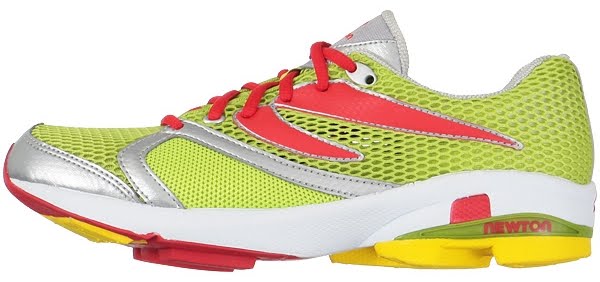
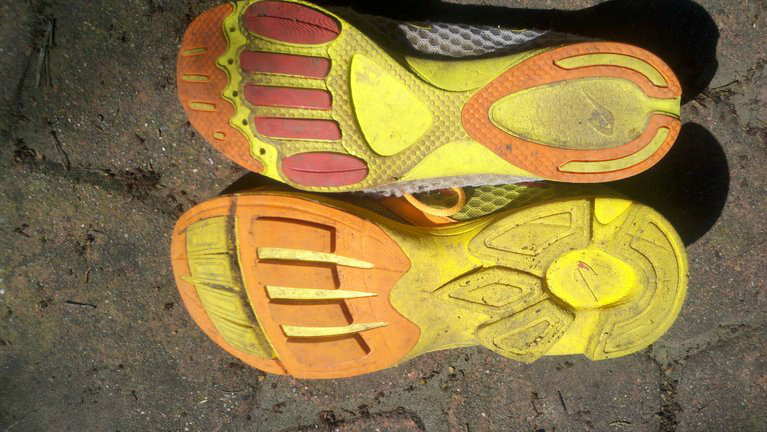

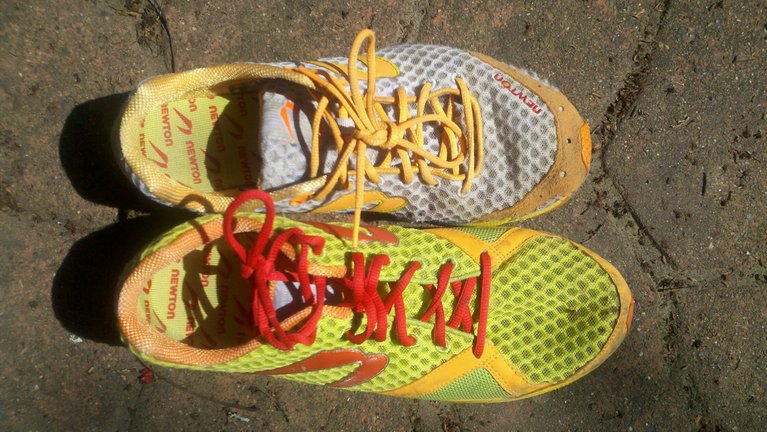



 The Newton MV2 is what I like to refer to as a "goldilocks shoe." The Newton MV2 strikes a nice balance between traditional running shoes and barefoot/minimalist shoes. The Newton MV2 is a lightweight, zero drop shoe, which encourages a natural midfoot/forefoot stride, but a reasonable midsole, as well as lugs placed under the forefoot, allow for more ground protection and a more comfortable ride for those long runs. By including the most important features of barefoot shoes with added forefoot protection has created an in between shoe that you may find to be just right.
The Newton MV2 is what I like to refer to as a "goldilocks shoe." The Newton MV2 strikes a nice balance between traditional running shoes and barefoot/minimalist shoes. The Newton MV2 is a lightweight, zero drop shoe, which encourages a natural midfoot/forefoot stride, but a reasonable midsole, as well as lugs placed under the forefoot, allow for more ground protection and a more comfortable ride for those long runs. By including the most important features of barefoot shoes with added forefoot protection has created an in between shoe that you may find to be just right.

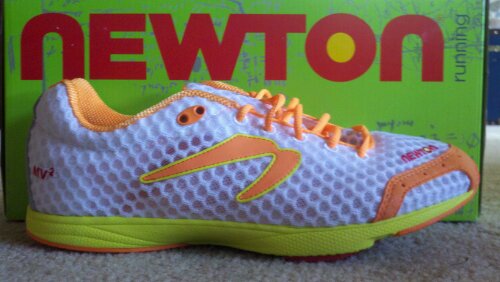
 The distinguishing feature of the Newton MV2 outsole are the lugs beneath the forefoot. Unlike previous Newton models, the Newton MV2 features five lugs rather than four. I believe the idea was to put a lug beneath each metatarsal. beneath each lug is a hollow chamber which allows each lug to compress and then spring back, theoretically allowing for energy return from the shoe. This is what Newton refers to as its patented action/reaction technology.
The distinguishing feature of the Newton MV2 outsole are the lugs beneath the forefoot. Unlike previous Newton models, the Newton MV2 features five lugs rather than four. I believe the idea was to put a lug beneath each metatarsal. beneath each lug is a hollow chamber which allows each lug to compress and then spring back, theoretically allowing for energy return from the shoe. This is what Newton refers to as its patented action/reaction technology.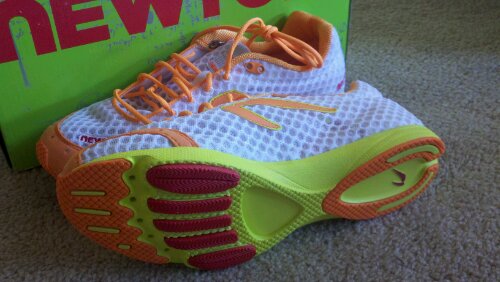
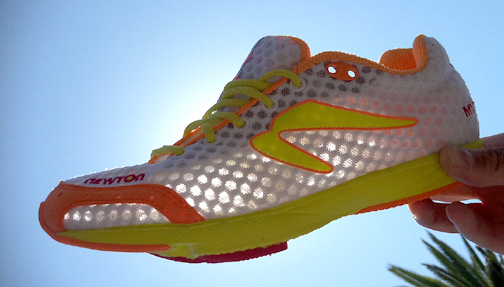

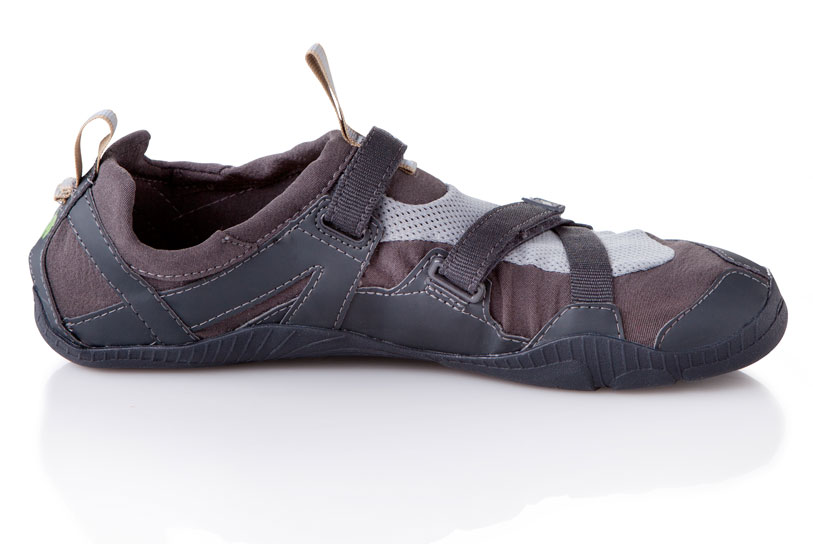
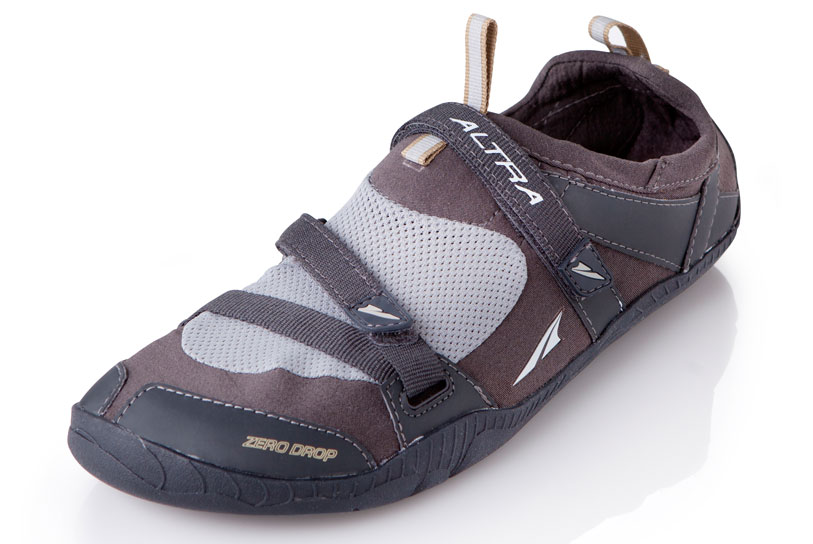



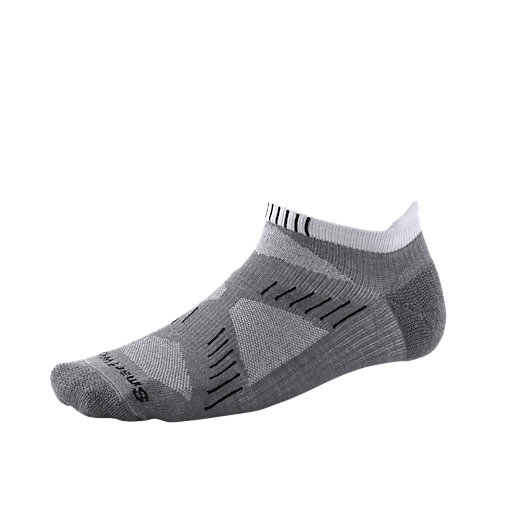

 Not since the Merrel Trail Glove have I been this excited about the release of a shoe. Danny Abshire, founder of Newton Running Shoes, and author of
Not since the Merrel Trail Glove have I been this excited about the release of a shoe. Danny Abshire, founder of Newton Running Shoes, and author of 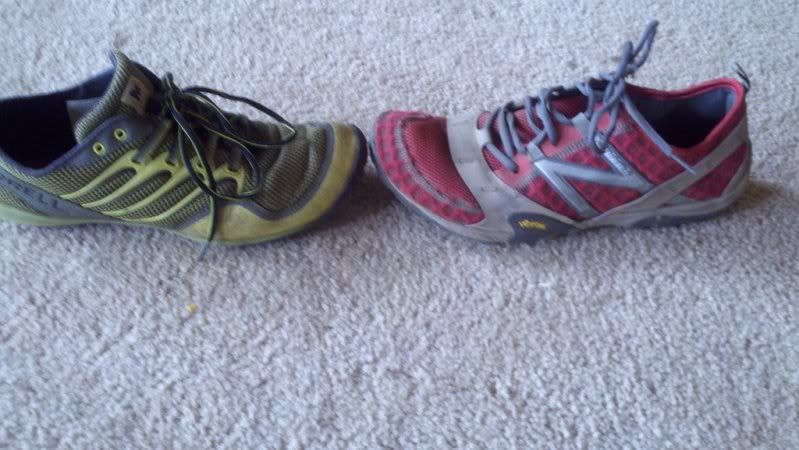 Before I learned Natural Running and switched to minimalist shoes, New Balance was my go to company for running shoes. So in 2010 when I learned that New Balance had intentions of producing a truly minimalist shoe my heart raced with anticipation. I would stalk the New Balance website to sneak peaks at the prototype, I even signed up to be a New Balance product tester in hopes that I might receive a pair before the release. About the time that the New Balance Minimus was about to be released I purchased a pair of Merrell Trail Gloves instead. A few month later and I now own both the Merrel Trail Glove and the New Balance Minimus.
Before I learned Natural Running and switched to minimalist shoes, New Balance was my go to company for running shoes. So in 2010 when I learned that New Balance had intentions of producing a truly minimalist shoe my heart raced with anticipation. I would stalk the New Balance website to sneak peaks at the prototype, I even signed up to be a New Balance product tester in hopes that I might receive a pair before the release. About the time that the New Balance Minimus was about to be released I purchased a pair of Merrell Trail Gloves instead. A few month later and I now own both the Merrel Trail Glove and the New Balance Minimus.
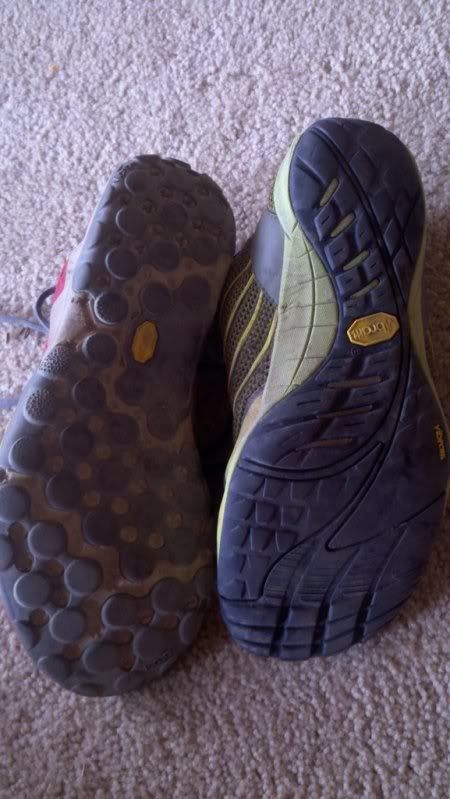
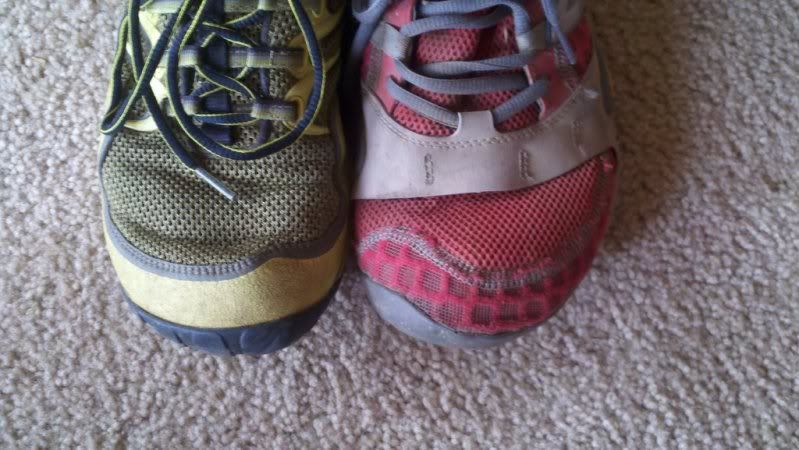 I bought mine 1/2 large. I usually wear 10 1/2, but while wearing socks the toe box of the 10 1/2 seemed a little snug.
I bought mine 1/2 large. I usually wear 10 1/2, but while wearing socks the toe box of the 10 1/2 seemed a little snug.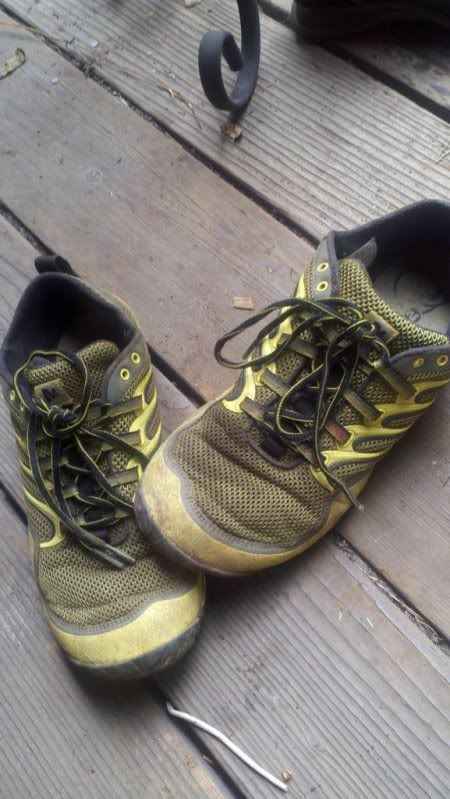
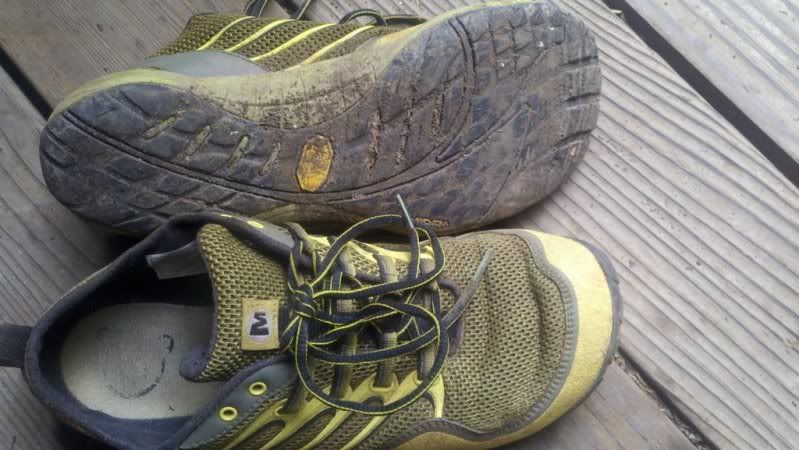



 For those interested I wore my
For those interested I wore my  The to call the Reebok Realflex a minimalist running shoe, or to say it emulates barefoot running is a real stretch. Much like the Nike Free, the Reebok Realflex is more flexible, more lightweight, and includes fewer support features than the average running shoe, but the toe-to-heel differential alone keeps shoes such as the Reebok Realflex as well as the Nike Free is a slightly different catagory than the most minimalist shoes such as
The to call the Reebok Realflex a minimalist running shoe, or to say it emulates barefoot running is a real stretch. Much like the Nike Free, the Reebok Realflex is more flexible, more lightweight, and includes fewer support features than the average running shoe, but the toe-to-heel differential alone keeps shoes such as the Reebok Realflex as well as the Nike Free is a slightly different catagory than the most minimalist shoes such as 



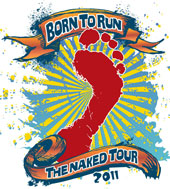 Christopher McDougall author of national best seller
Christopher McDougall author of national best seller  Much to the surprise to many of us in the minimalist running community, shoe manufacturer Brooks has announced its intention to listen to the market and produce a minimalist line of shoes. (Though I should point out they were very cautious not to use the term "minimalist running shoe.") This is most surprising due to a
Much to the surprise to many of us in the minimalist running community, shoe manufacturer Brooks has announced its intention to listen to the market and produce a minimalist line of shoes. (Though I should point out they were very cautious not to use the term "minimalist running shoe.") This is most surprising due to a 
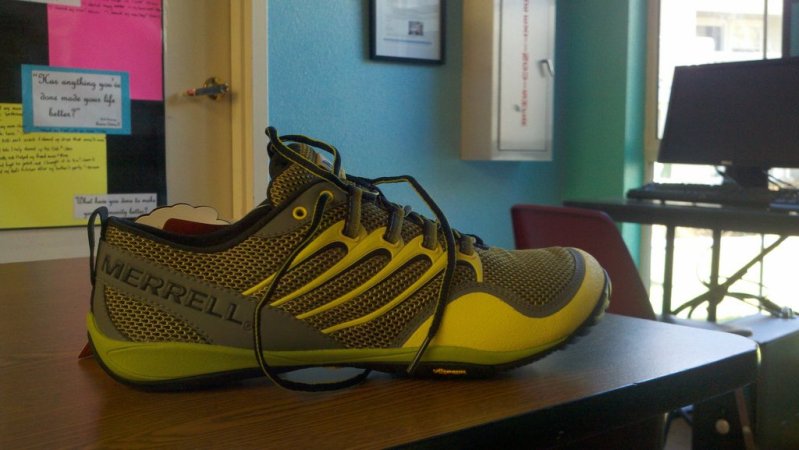
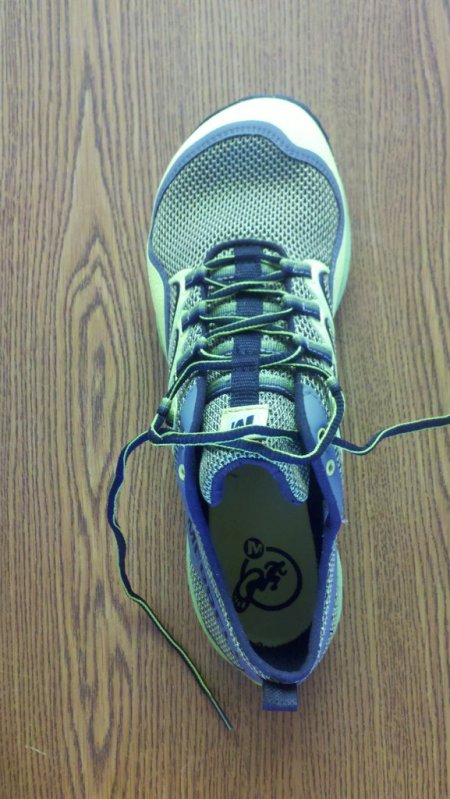


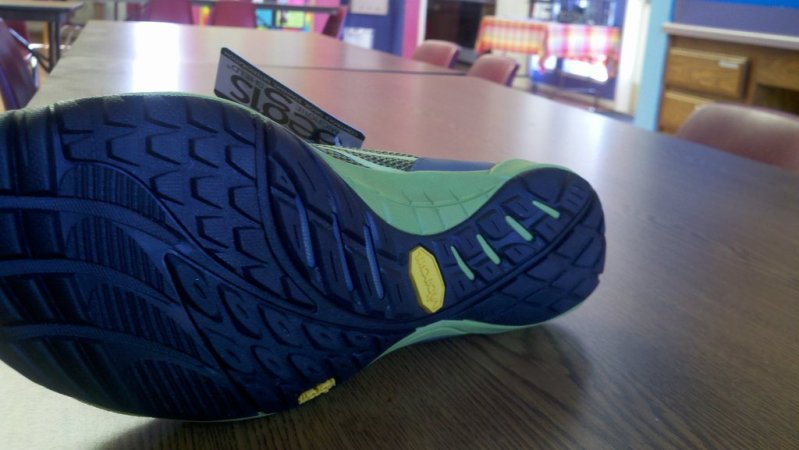


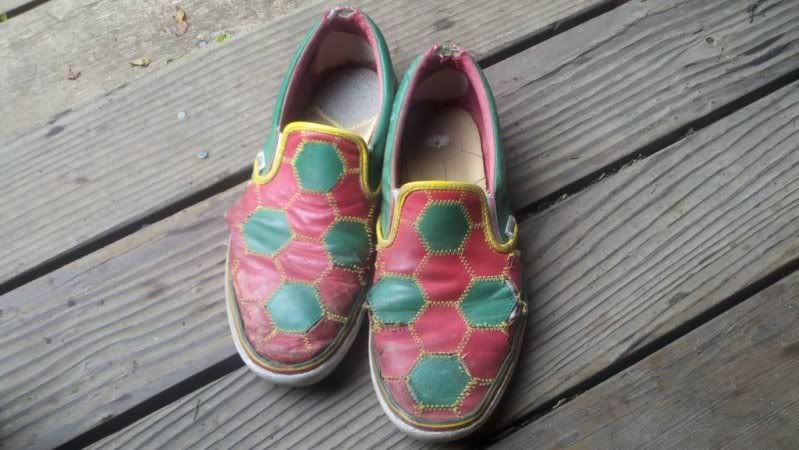 Two years ago I bought a my first pair of Vans. I paid six dollars for them at a thrift store in Berkeley. At the time I had never even considered Vans as a viable choice for a running shoe. As a crew leader for the northwest youth corps I was to spend a few months camping and I was looking for a comfortable slip on slip off shoe to wear when not wearing OSHA required 7 inch leather work boots. The shoes survived 3 months in the back country with barely any blemishes. In those three months I fell in love, so I have been wearing my Van's pretty much everyday since then.
Tonight, for the first time I decided to were my Van's during my speed workout with the Tamalpa Club. Two words, Amazing. Okay, so just one word. I was blown away by how comfortable it is to run in my Van's. Then during my second mile repeat I began to analyze them, and it turns out that my six dollar Van's have all the
Two years ago I bought a my first pair of Vans. I paid six dollars for them at a thrift store in Berkeley. At the time I had never even considered Vans as a viable choice for a running shoe. As a crew leader for the northwest youth corps I was to spend a few months camping and I was looking for a comfortable slip on slip off shoe to wear when not wearing OSHA required 7 inch leather work boots. The shoes survived 3 months in the back country with barely any blemishes. In those three months I fell in love, so I have been wearing my Van's pretty much everyday since then.
Tonight, for the first time I decided to were my Van's during my speed workout with the Tamalpa Club. Two words, Amazing. Okay, so just one word. I was blown away by how comfortable it is to run in my Van's. Then during my second mile repeat I began to analyze them, and it turns out that my six dollar Van's have all the 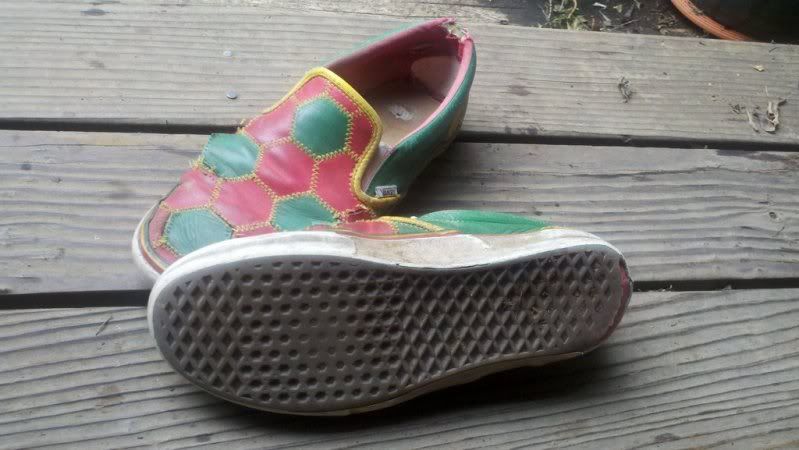 Thin flexible sole
Thin flexible sole